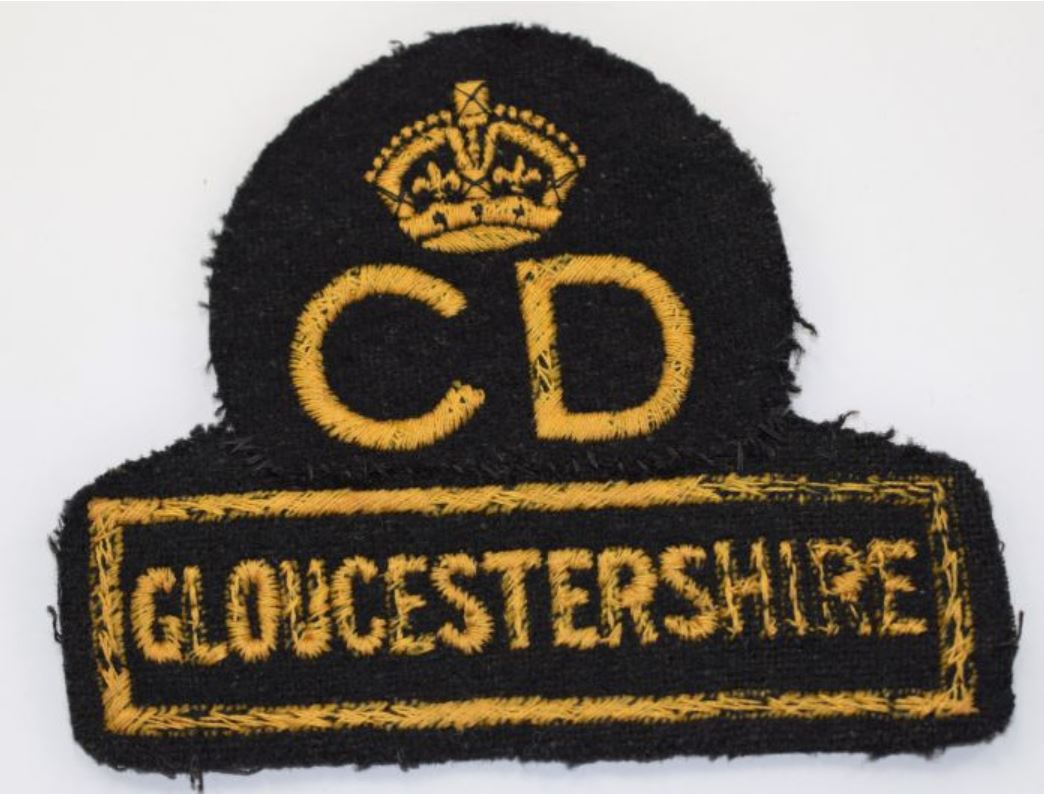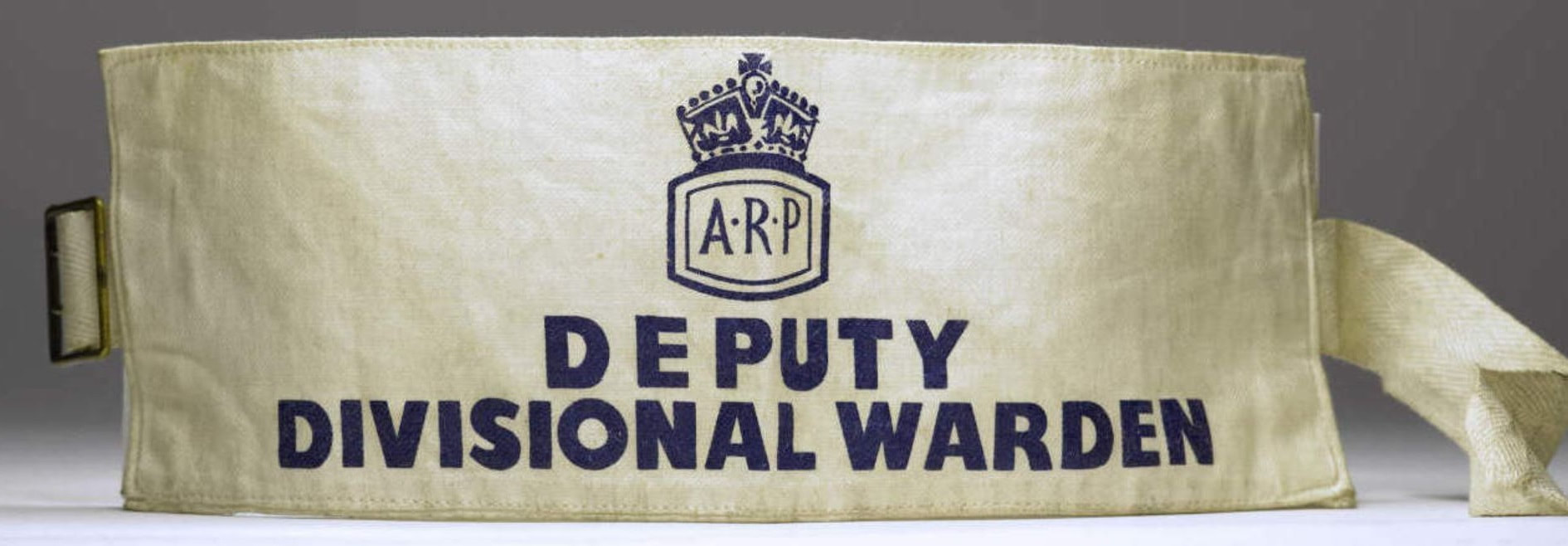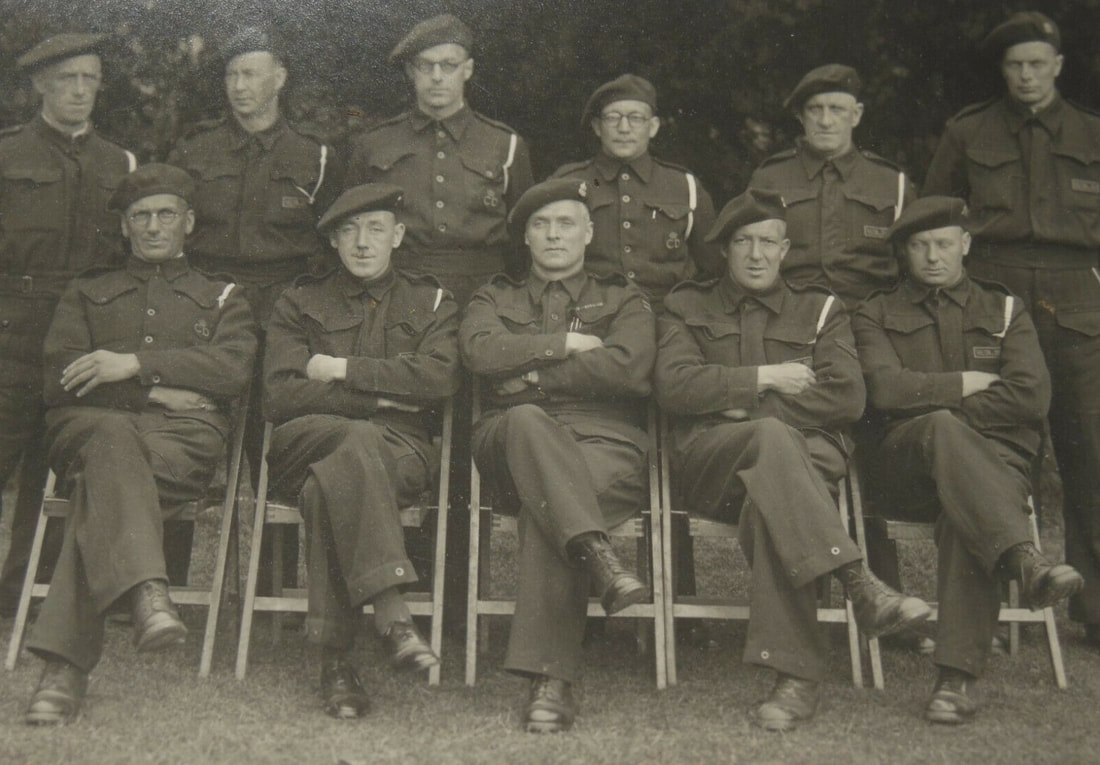|
This interesting badge is made from the standard issue CD breast badge and the local area marking badge for Gloucestershire. There's usually not enough space on the left-hand pocket of the battledress to accommodate both badges neatly so in this case it looks like the owner cut down the breast badge a little. An interesting bespoke badge that is currently for sale on World War Wonders.
0 Comments
These lamps/torches could be fitted to the brim of a helmet to give the wearer hands-free light when working. The battery pack could be clipped onto the wearer's belt and the wire usually run up the back and over the shoulder to the lamp head. They appear in many ARP equipment catalogues but few photographs exist showing them being worn. This example was posted on eBay for £70. A rare Deputy Divisional Warden armband from Edinburgh. Text appears to be a deep blue in colour on a white cotton background with a buckle fastening,
Image: Museum of Edinburgh It's always interesting to see the uniform regulations being bent. This pretty standard group portrait of (probably) wardens features a lady on the bottom left wearing a male battledress. It's rare but not unheard of to see period photos of females having managed to get hold of a battledress. Apart from that it's a pretty standard photo of uniforms and insignia. Appears that the majority of berets have the printed CD in a yellow circle. That's a bit unusual as those with ARP badges usually fixed them to their berets. There's a member of the Home Guard lurking in the photo as well...
A group photograph of civil defence personnel wearing both types of ARP Pattern battledress - the first issue and the the later austerity (with exposed buttons). Oddly, this photo shows some men only displaying an area marking in the place where the CD breast badge would normally be. Alas I cannot make out the area name though the photo appears to come from Cumbria. Probably a case of the local authority have some difficulty in sourcing the badges.
|
Please support this website's running costs and keep it advert free
Categories
All
Archives
June 2024
|
|
|
Copyright © 2018–2024
|




 RSS Feed
RSS Feed